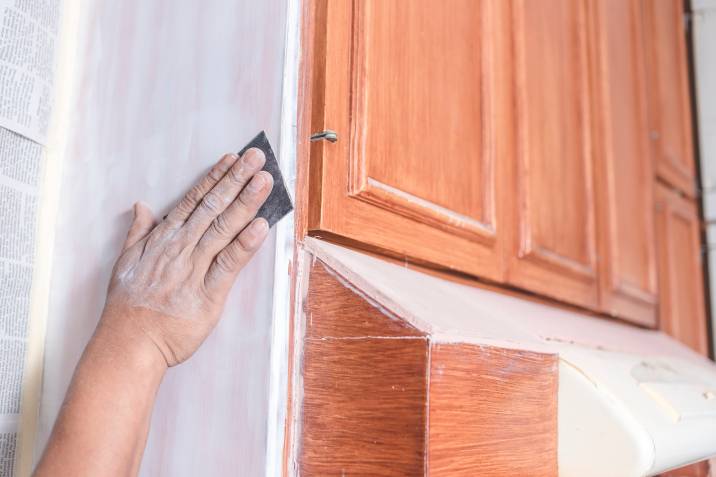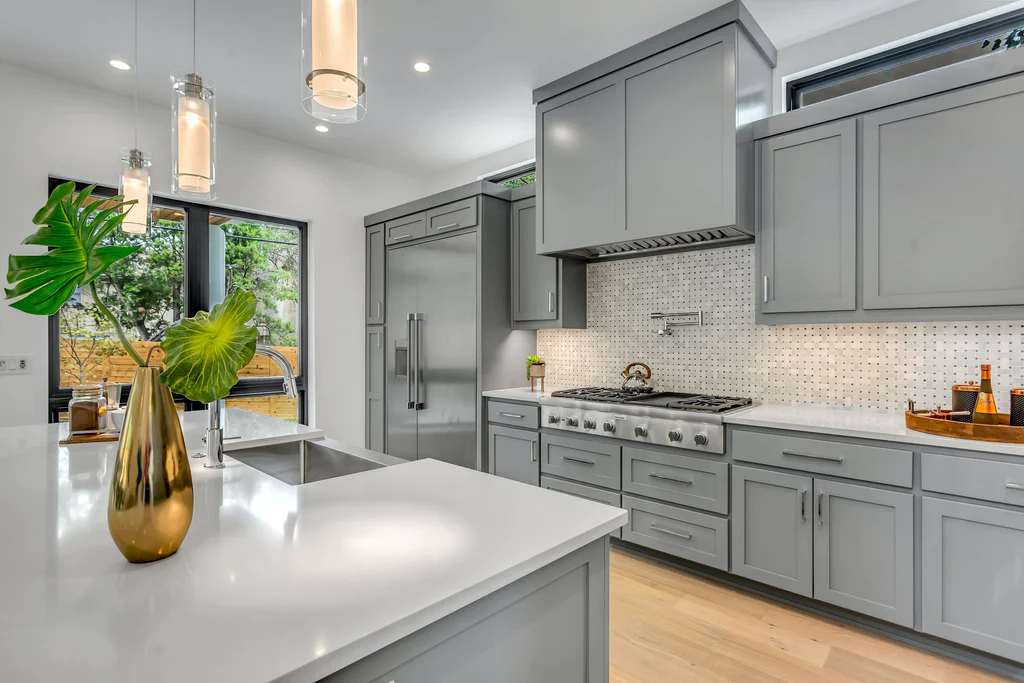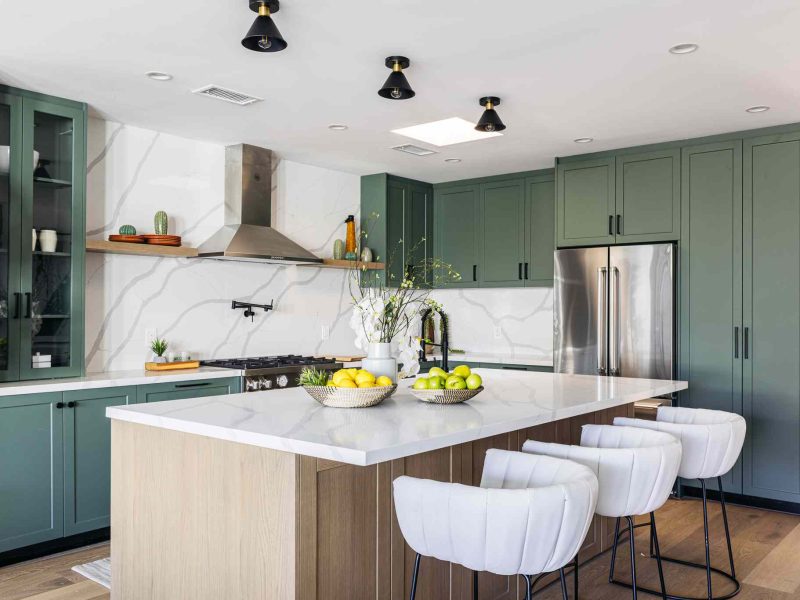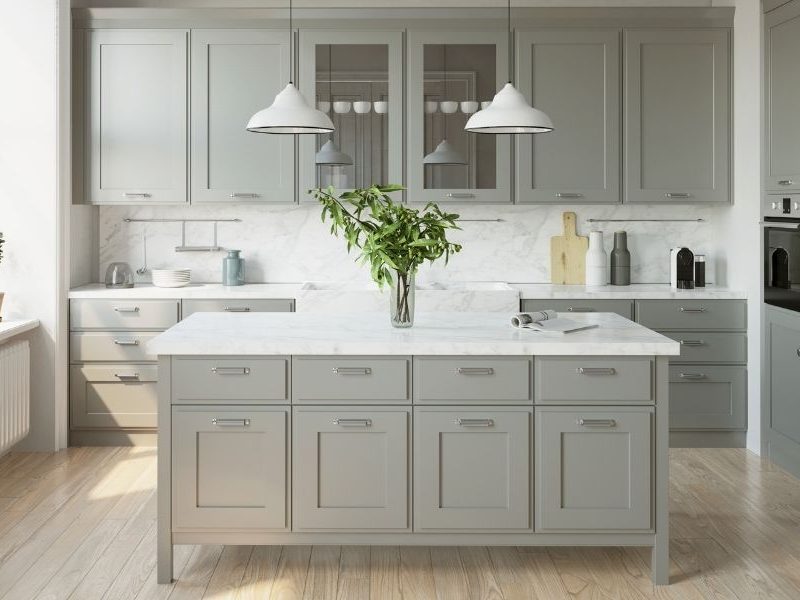Paint brushes are an essential tool when painting cabinets. Brushes are ideal for getting a smooth, even finish on the cabinet surfaces and ensuring that the paint is evenly distributed. With the right brush, you can achieve a professional finish that will make your cabinets look like new. Different types of brushes are available for different types of paints and finishes, so it is important to select the right brush for the job. The right brush can make a huge difference in the end result, so it is important to make sure that you have the right one for the job.
What are Cabinet Paints?
Cabinet paints are a necessary component of any home renovation project, and the type of paint you use can have a significant impact on the look of your cabinets. Cabinet paints are specially formulated to be more durable than standard wall paints. They are usually oil-based or water-based and come in a variety of finishes, such as glossy, satin, or matte. Different finishes offer different levels of protection for your cabinets against moisture, wear, and other damage. When it comes to applying cabinet paint, it is important to know whether you should use a brush or a roller.
Using a brush is the traditional method of applying cabinet paint and can produce a smoother, more even finish than a roller. Brushes also give you more control over the thickness of the paint and the amount of coverage. However, brushes can be more time-consuming and require more skill to achieve a professional look. On the other hand, rollers are easier to use and allow the paint to be applied quickly and evenly. Rollers are also less likely to leave brush marks, but they can sometimes result in a thicker coat of paint than a brush.
Ultimately, the decision of whether to use a brush or roller for painting cabinets is largely a matter of preference. Both methods have their advantages and disadvantages, and the best choice for you will depend on your skill level and the amount of time you have available. If you are just starting out, it may be a good idea to practice with both methods to determine which one works best for you.
Preparing the Cabinets for Painting
Painting cabinets is a great way to give your kitchen a fresh, new look. But before you get started, you need to make sure your cabinets are properly prepared for painting. This includes cleaning and sanding the surfaces, as well as applying a primer or base coat. Doing this will ensure that your paint job looks its best and lasts for years to come.
Before you start painting, it’s important to clean the cabinets thoroughly with a degreasing solution. This will remove any dirt, grease, or grime that may be lingering on the cabinets and will help the paint adhere better. Once the cabinets are clean, you’ll want to lightly sand the surfaces to remove any rough spots and to create a smooth surface for the paint to adhere to.
Once the cabinets are sanded, it’s time to apply a primer or base coat. This will help the paint adhere to the cabinets better, as well as provide a layer of protection from any dings or scratches. When applying the primer or base coat, you can use a brush, roller, or sprayer to get the job done. Just make sure to use even strokes and be careful not to apply too much paint.
By following these steps, you can ensure that your cabinets are properly prepared for painting. Taking the time to do this will help you achieve a professional-looking paint job that will last for years to come.

Choosing the Right Paint Brush
for Cabinets
Painting cabinets can be a daunting task, and the last thing you want is for your hard work to be ruined by a poor brush selection. While there are many types of paint brushes available, it’s important to select the right one for the job to ensure a professional finish. Generally, you’ll want to use a brush with synthetic bristles, as they provide a smoother and more even finish than natural brushes. Additionally, look for a brush with a tapered edge; this helps ensure a smooth, streak-free finish. You’ll also want to consider the size of the brush; a larger brush may be easier to work with, but a smaller brush can provide more precision when painting details. With the right brush in hand, you’ll be ready to tackle your cabinet painting project with ease!
Applying Paint with a Brush
Painting cabinets with a brush can be a great way to add a professional-looking finish to your home. Brushes are especially suited for cabinets with intricate design details, as they are able to get into the nooks and crannies that other tools can’t. When using a brush, it is important to ensure that the bristles are soft and of high quality, as this will help to ensure even coverage of the paint. It is also important to use a brush that is the right size for the job, as using a brush that is too large or too small can result in an uneven finish.
When painting cabinets with a brush, it is important to use a smooth, even stroke, making sure not to press too hard on the bristles or to leave large gaps between strokes. It is also important to clean the brush after each use, as this will help to prevent the bristles from becoming clogged with paint. When painting cabinets, it is also important to remember to use multiple coats and to allow each coat to dry completely before applying the next. This will help to ensure that the paint is evenly distributed and that the finish is smooth and professional-looking.
Aftercare Tips for Painted Cabinets
Painting cabinets is a great way to give your kitchen or bathroom a makeover without having to completely replace them. But, in order to ensure that your cabinets look their best for years to come, it is important to know the right aftercare for painted cabinets. After all, the best paint job won’t last if you don’t properly care for the cabinets after they’ve been painted.
One of the most important things to keep in mind is that you should never use a brush to paint cabinets. Brushes can leave behind brush strokes that will be visible on the finished product. Instead, use a foam roller or paint sprayer to apply the paint. This will help ensure a smooth finish.
Once the cabinets are painted, you should apply a sealant to protect them from dirt, dust, and moisture. This will help maintain the look of the cabinets for a longer period of time. Additionally, wiping down the cabinets with a damp cloth on a regular basis will help remove any residue that may build up over time.
It is important to note that you should never use harsh cleaning products on painted cabinets. This can strip away the paint and sealant, leaving the cabinets looking dull and worn. Use mild, gentle cleaners instead.
By following these aftercare tips, your painted cabinets will look great for years to come.
Benefits of Painting Cabinets with a Brush
Painting your cabinets can be a daunting task, but it doesn’t have to be. Using a brush to paint your cabinets is a great way to get the job done quickly and efficiently. With the right tools and techniques, you can paint your cabinets and make them look like they were professionally done. In this article, we’ll discuss the benefits of painting cabinets with a brush.
Using a brush is one of the fastest and most efficient ways to paint your cabinets. Brushes provide a smooth, even finish and can be used to get into the nooks and crannies of the cabinets. By using a brush, you can apply the paint more evenly and with greater control than with a roller. Also, brushes are less likely to leave unsightly streaks or blotches on the surface.
When painting cabinets with a brush, you can also achieve a more professional-looking finish. Brushes allow you to get into those hard-to-reach areas and produce a more consistent and even coat of paint. Brushes are also less likely to leave brush strokes, which can be difficult to fix.
Another benefit of painting cabinets with a brush is that you can use a variety of paints. You can use water-based or oil-based paints, and you can choose from a range of colors and finishes. You can also use a brush to apply primer to the cabinets before painting them.
Finally, painting cabinets with a brush is relatively easy. It’s a skill that anyone can learn with a little practice and patience. With the right tools and techniques, you can master the art of cabinet painting and create a beautiful, professional-looking finish.
Potential Challenges of Painting Cabinets with a Brush
Painting cabinets can give your home a fresh look, but the process isn’t always straightforward. Many people are tempted to opt for a brush when painting their cabinets, but this approach can be difficult and time-consuming. Before attempting the task, it is important to understand the potential challenges of painting cabinets with a brush.
The first challenge is the time commitment. Brushes tend to be slower than spray guns and rollers, so it can take longer to finish the project. Additionally, the brush can be hard to maneuver in tight spaces, meaning that it can be difficult to get an even and consistent coat of paint. Furthermore, it can be difficult to maintain a steady pressure when painting with a brush, leading to visible brush strokes in the finish.
Another challenge is achieving a smooth finish. Even if you manage to apply the paint evenly, the brush may not be capable of producing a slick, glossy finish. For best results, you may need to sand the cabinets and then apply a coat of sealer. This can add to the time and energy needed for the project.
Finally, painting cabinets with a brush may require more paint than spray guns or rollers. Brushes tend to consume more paint, so it is important to keep this in mind when budgeting for the project.
Overall, painting cabinets with a brush can be a challenging and time-consuming task. It is important to consider the potential issues before starting the project to ensure that you have the patience and dedication to see it through.
Alternatives to Painting Cabinets with a Brush
Painting cabinets with a brush is a time-consuming endeavor, and it can be difficult to achieve a flawless, professional-looking finish. Fortunately, there are several alternative methods for completing this task that can save time and money, while still achieving the desired results. Spraying is one of the most popular alternatives to painting with a brush, as it provides a smooth, even finish that’s difficult to achieve with a brush. HVLP (High-Volume Low-Pressure) and airless sprayers are both suitable for this purpose, and they can be used to apply a range of different finishes and textures. If you’re looking for an even more detailed, professional finish, then you might want to consider using a brushless paint system. This involves a combination of a spray gun and an air compressor. Brushless systems provide a precise finish with less overspray, and they’re ideal for intricate designs and complex patterns. Additionally, if you’re working on a smaller project, then you may find that a foam roller is the best option for achieving a uniform finish. Foam rollers are quick and easy to use, and they can be used to apply a variety of paints and finishes. Whichever method you choose, it’s important to ensure that you properly prep your cabinets before you begin. This includes sanding, priming, and cleaning the surface to ensure a smooth, professional-looking finish.
Conclusion
Painting cabinets with a brush can be an effective way to update the look of your kitchen. Brushes provide a smooth, even finish and can be used to apply both oil-based and water-based paints. However, brushes are time-consuming and may require several coats of paint to achieve a uniform finish. For those who prefer a faster, more efficient way to paint their cabinets, spray painting may be the better option.


